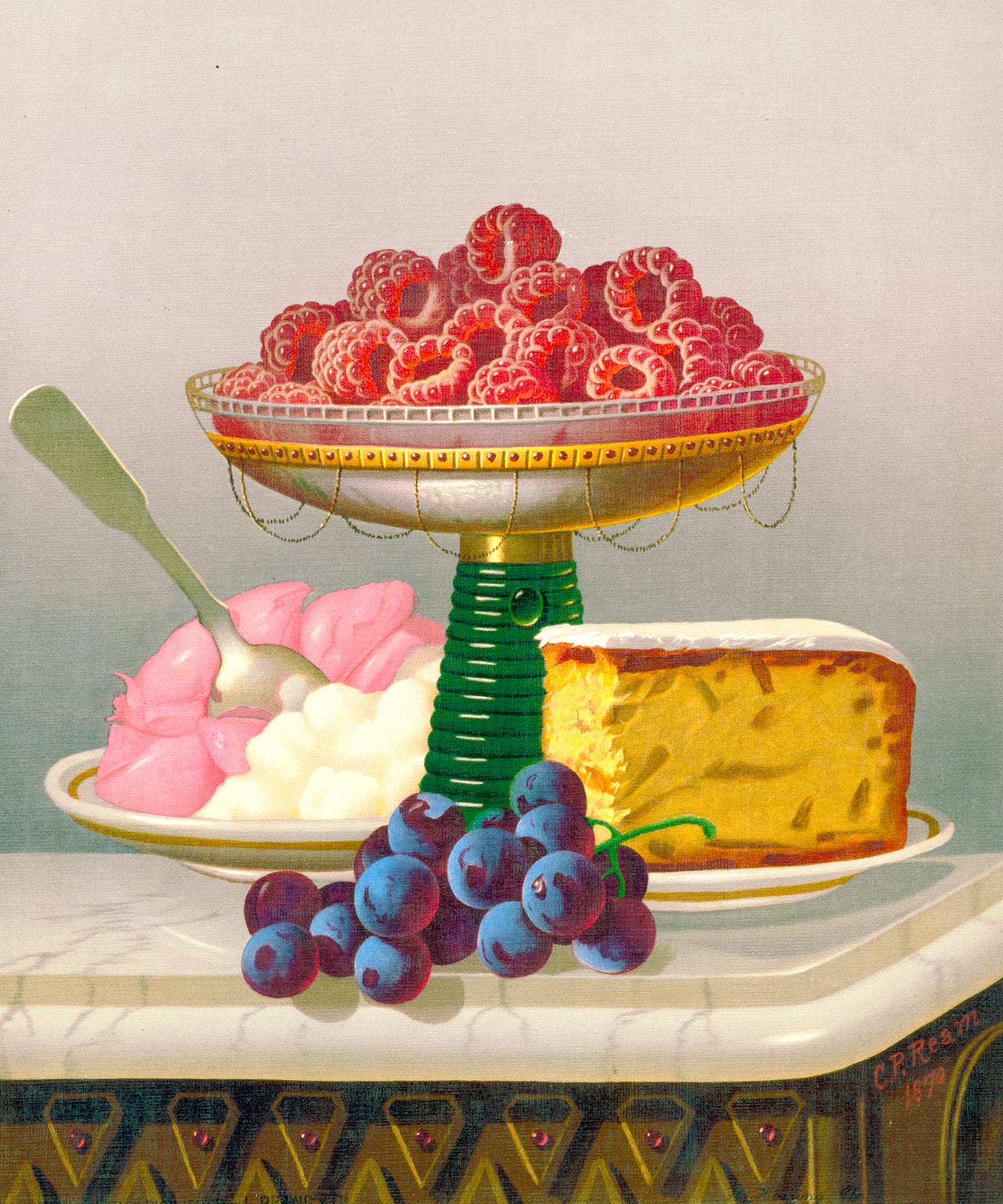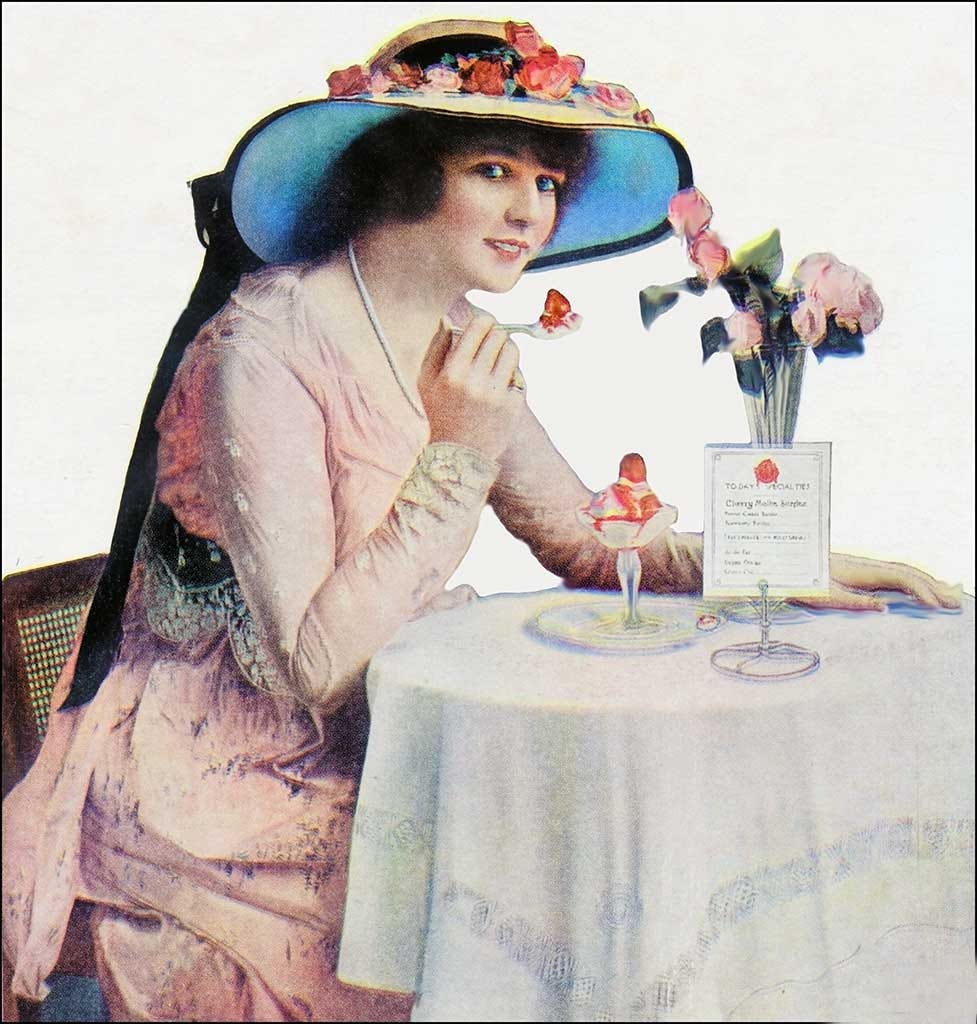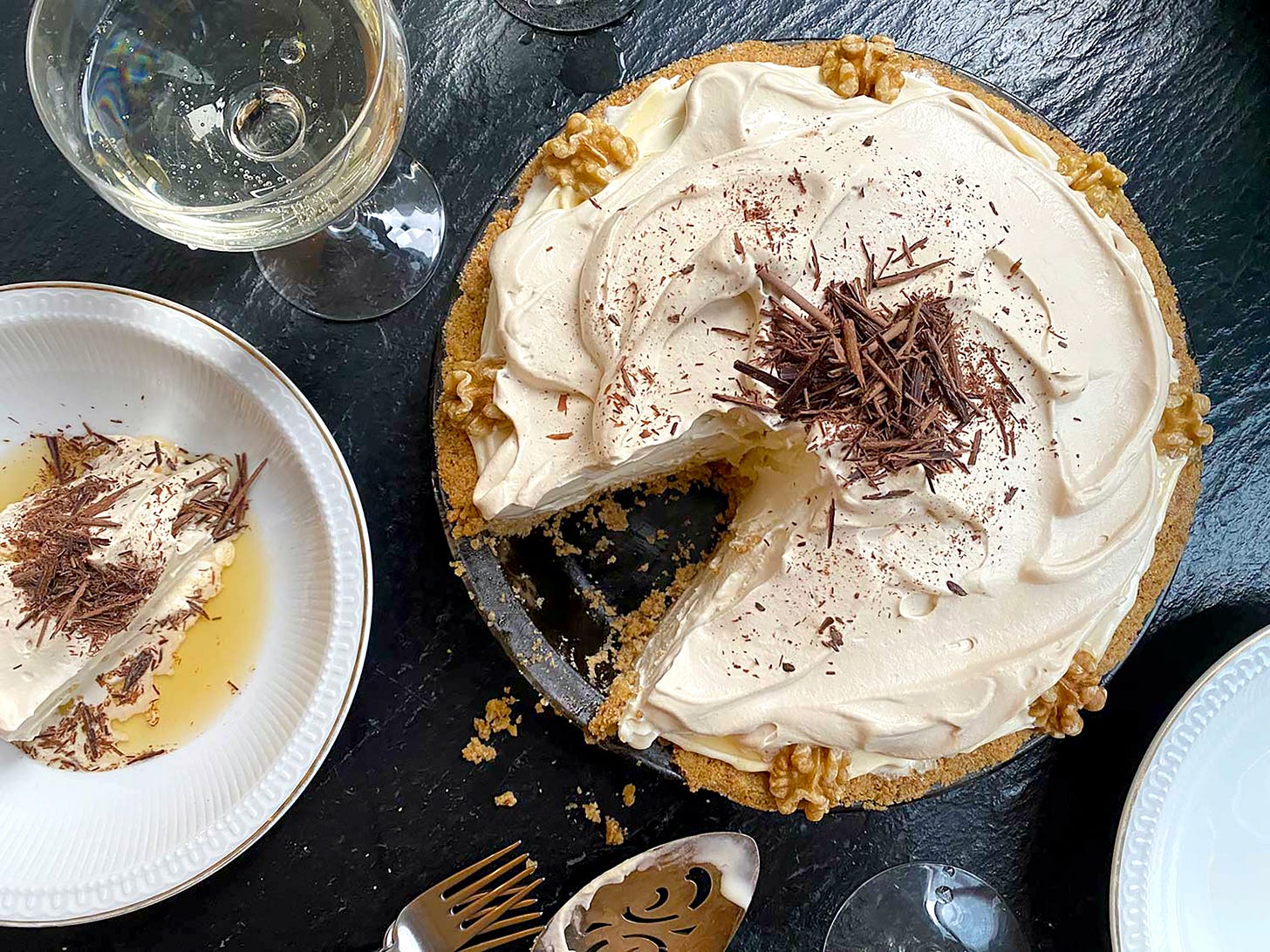Addendum: Come Again? What’s A Lalla Rookh? From The History of Ice Cream and Soda Fountains
A strange yet historical name for an easy-peasy, sensational dessert from American cooking history.

You never know. This might come up in a trivia game. If so, trust me, you’ll be the one they admire most.
Because, you see, if we were living in the mid-19th-century or even through the first quarter of the 20th-century, the fancy dessert called Lalla Rookh would have been instantly recognizable and just as common as what Crème Brulée is today.
Every Victorian, Edwardian and even Post-Edwardian individual knew what Lalla Rookh was all about. There were many versions, but the most important ingredients were ice cream, cookies, whipped cream, and most of all, alcohol.
In my previous article about the history of ice cream and soda fountains, Lalla Rookh was considered an “old-fashioned recipe” by 1915 but the dessert seemed to completely fade away by the mid-1930s. This was likely due to Prohibition, of course, because the recipes for Lalla Rookh between 1920 to 1933 replaced the moat of Jamaican rum, Crème de Menthe, Madeira, or Brandy with a simple, smooth custard sauce, sans spirits.
The one commonality over time between all the variations is that they are easy and relatively quick to create.

The definition of Lalla Rookh from John F. Mariani’s (1999) Encyclopedia of American Food and Drink explains:
Lalla Rookh is “a nineteenth-century dessert made with eggs, spirits, and whipped cream although there are many variations. A 1910 cookbook by San Francisco chef Victor Hitzler, of the Hotel St. Francis, even listed Lalla Rookh as nothing more than a crème de menthe cordial poured over ice in a sherbet glass to be served as a digestive between courses.”
The name Lalla Rookh actually means Tulip Cheek in hindi. She was the exotic, fictional daughter of the last great Mugul Emperor of India during the 1600s. The romantic story about Lalla Rookh describes how she fell in love with a poet who she thought was a commoner, only to find out that he was actually a sultan. Her story ends happily when they are betrothed.
Fast forward to 1817, when Thomas Moore (Irish poet, writer, and lyricist) wrote a lengthy poem about this traditional 17th-century Indian love story. His poem was destined to become a tremendously popular bestseller both in the United States as well as England. And so, by the late Victorian era, Lalla Rookh’s name was destined to describe an extravagant alcoholic dessert that was typically served with ice cream, spirits, nuts, cookies, candies and fruits, as well as lots of whipped cream.
Below is a modern, delectable variation of Lalla Rookh, as featured in the editors’ (no author credits given) in “Boozy and Easy” and courtesy of Saveur, January 2020 and my personal favorite of all the versions. Recommended: I find that the recipe is best with real French butter, true English digestive biscuits, the finest quality or homemade ice cream, as well as top-shelf liquor.
With thanks for courtesy reprint nod of this tasty recipe from “Saveur” magazine, January, 2020.

Equipment
Yield: makes one 9-in. pie
Time: 1 hours 30 minutes
Ingredients
For the Crust
6 Tbsp. (3 oz.) unsalted butter, plus more for greasing
6 oz. English digestive biscuits (such as McVitie’s); (about twelve 3-inch biscuits)
½ cup (2 oz.) toasted walnut halves, plus 8 additional walnut halves for garnish
¼ cup (2 oz.) sugar
Pinch of kosher salt
For the Filling and Topping
1½ qt. vanilla ice cream
½ cup dark rum or fine Cognac
1 cup heavy cream
2 Tbsp. confectioners’ sugar
1½ tsp. instant espresso powder dissolved in 2 tsp. heavy cream
¾ tsp. vanilla extract
Bittersweet chocolate shavings
Instructions
To a small pot over medium heat, add the butter and cook, using a wooden spoon to stir frequently, until the foam subsides and the butter begins to brown, with specks of darker brown collecting at the bottom of the pan, 5–6 minutes. Remove from heat and continue stirring to cool slightly and stop the cooking. Set aside to cool to room temperature.
Preheat an oven (with one of its racks positioned in the center) to 300°F. To a food processor, add the walnuts and pulse to chop finely. Transfer the nuts to a medium bowl. Add the biscuits to the food processor, pulse them until finely chopped, and transfer them to the bowl as well. Add the sugar and salt and stir well to combine then add the browned butter, mixing until the dry ingredients are thoroughly moistened. Lightly butter a 9-inch glass or aluminum pie plate. Transfer the crumb mixture to the pie plate, then use your fingertips to press it into an even layer, working the mixture into the corners of the plate and evenly up the sides. Cover the crust with a piece of plastic wrap and use the bottom of a measuring cup or glass to smooth and compress the crumbs into place. Transfer to the freezer until the dough is firm and set, at least 15 minutes or overnight.
Retrieve the pie shell from the freezer, place it on a large baking sheet, remove the plastic film, then immediately transfer to the oven and bake until just set and lightly browned, 12–14 minutes. Set aside to cool completely.
Meanwhile, soften the ice cream: Transfer the container from the freezer to the fridge and allow it to soften slightly, about 20 minutes. When the crust is cooled, use a large silicone spatula to fill the pie plate, gently smoothing the ice cream in place without breaking apart the crust. Cover the pie with plastic wrap and return it to the freezer until the ice cream is firm but still scoopable, 15–20 minutes.
Retrieve the pie from the freezer and remove the plastic wrap. Use a long knife to score the surface into 8 equal portions. Starting 1” from the edge of the pie, use a melon baller or small scoop to hollow out eight 1-inch holes, (without going to the very bottom of the pie) one per portion. Re-cover the pie with plastic wrap and return the pie to the freezer until the ice cream is completely firm about 1 hour.
To a large chilled bowl of a stand mixer fitted with the whip attachment, add the heavy cream and confectioners’ sugar and beat until thickened. Add the dissolved instant espresso powder and vanilla extract, beating just until the mixture thickens and holds soft peaks. Finish whisking the cream to stiff peaks by hand, being careful not to overwhip. Cover the cream and refrigerate until ready to serve.
To serve the pie. Measure the rum or Cognac into a liquid measuring cup with a spout. Retrieve the pie from the freezer and remove the plastic wrap. If necessary, use the melon baller to make distinctive hollows- sometimes the ice cream softens and needs a little definition. Carefully fill each hollow with 1 tablespoon of the liquor, taking care not to overfill. Place a walnut half at the crust edge of each portion so you will know where to slice the pie. Retrieve the whipping cream from the refrigerator and cover the top of the pie with the cream. Garnish the pie with chocolate shavings and additional toasted walnuts. Use a hot knife to slice carefully, transfer to rimmed dessert plates or small, shallow bowls, and serve immediately. Cover and freeze any leftovers for up to 3 days.




Great article. Interesting dessert from the past and will certainly try the recipe. Thanks !!!😊